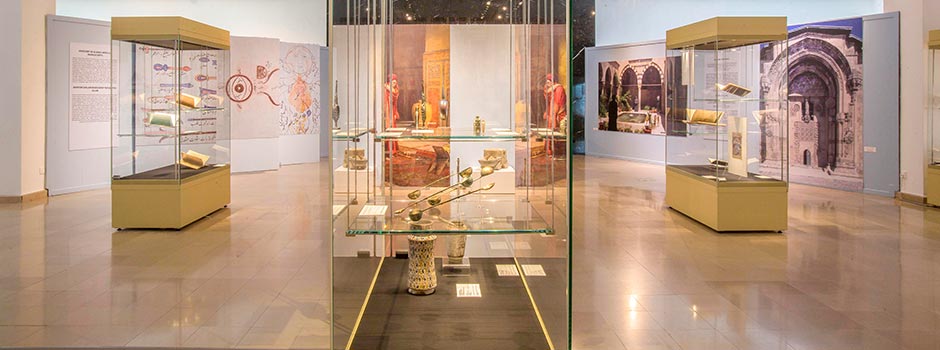
ISLAMIC ARTS MUSEUM MALAYSIA (MARCH 19 – DECEMBER 31, 2018) Al-Tibb: Healing Traditions in Islamic Medical Manuscripts
May 28, 2018 Manuscripts

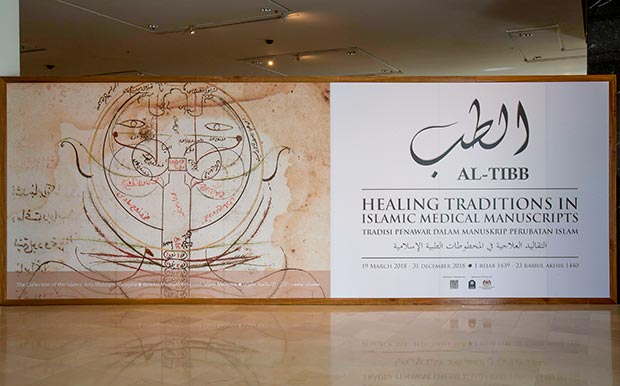 Al-Tibb: Healing Traditions in Islamic Medical Manuscripts / Courtesy of IAMM
Al-Tibb: Healing Traditions in Islamic Medical Manuscripts / Courtesy of IAMM
Al-Tibb is an Arabic term used to denote the methods of treating and understanding diseases. The physician is called tobeeb while the patient is described as tobba. This term was associated with medical literature and practices during the Islamic periods, thus described the medical, or therapeutic treatment of the body and soul. Ibn Sina, the father of Muslim Medicine defined it as “Al-Tibb (medicine) is to preserve health and cure diseases arising from causes affecting the body and producing symptoms.†In a medical poem (Al-Urjuzah fi al-Tibb); Ibn Sina divided Al-Tibb into theoretical and practical approaches which he explained in depth in his iconic work; The Canon of Medicine (Al-Qanun fi al-Tibb). The exhibition 'Al Tibb: Healing Traditions in Islamic Medical Manuscripts' sheds light on the literature and practices of renowned Muslim scientists across the Islamic World.
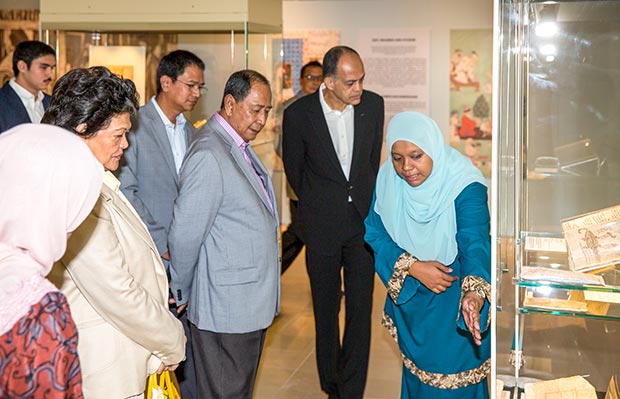 Al-Tibb: Healing Traditions in Islamic Medical Manuscripts, opening / Courtesy of IAMM
Al-Tibb: Healing Traditions in Islamic Medical Manuscripts, opening / Courtesy of IAMM
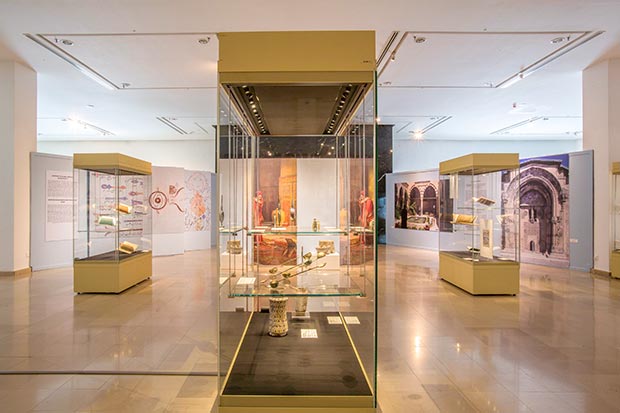 Al-Tibb: Healing Traditions in Islamic Medical Manuscripts, installation view / Courtesy of IAMM
Al-Tibb: Healing Traditions in Islamic Medical Manuscripts, installation view / Courtesy of IAMM
Introducing the exhibition is the impetus and motivation behind the birth and growth of the Islamic medicine. The visitor learns about the sophistication of the translation movement, knowledge transfers and cultural exchange that helped enhance the Islamic medical discourse. The procession then trails along the inspiring advancements made in the areas of pharmacology, as well as in aspects of dietetics and hygiene. The journey is made complete by a unique showcase of some of the earliest coloured anatomical drawings. The framework of the Islamic hospital, as well as the equine veterinary, are also key components. The exhibition also dives into the rarely touched aspects of the Malay traditions of healing and practices of folk medicine.
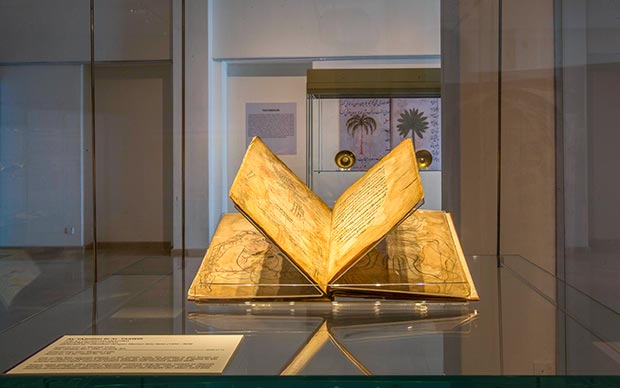 Al-Tibb: Healing Traditions in Islamic Medical Manuscripts, installation view / Courtesy of IAMM
Al-Tibb: Healing Traditions in Islamic Medical Manuscripts, installation view / Courtesy of IAMM
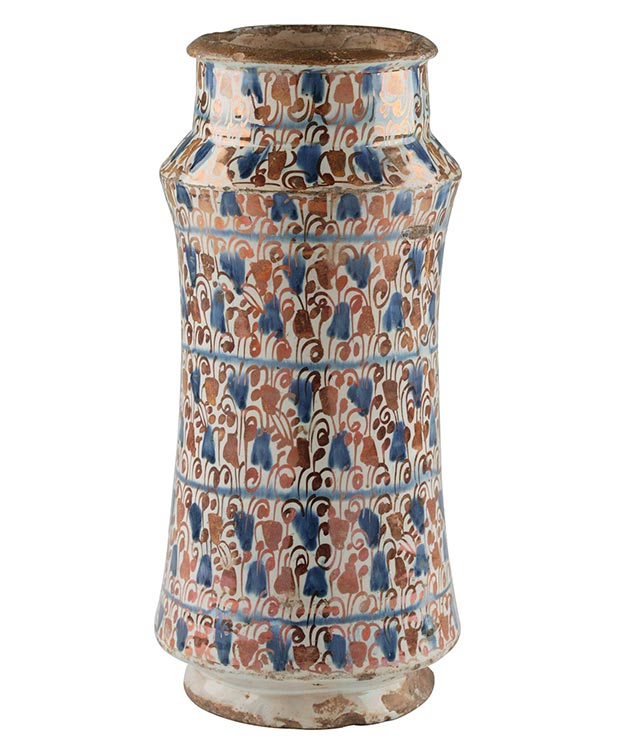 Albarello, Valencia, Spain, 15th- 16th century AD / 9th-10th century AH / IAMM 2008.1.20 / Albarello, an apothecary jar which had its roots from the Islamic world are famously used to keep medicaments / Courtesy of IAMM
Albarello, Valencia, Spain, 15th- 16th century AD / 9th-10th century AH / IAMM 2008.1.20 / Albarello, an apothecary jar which had its roots from the Islamic world are famously used to keep medicaments / Courtesy of IAMM
The visitors have the chance to witness an unprecedented collection of important and elaborate works by prominent physicians, philosophers and scientists of the Islamic world. Highlights include a seminal medicinal treatise, Kitab al-Shifa (The Book of Healing), authored by polymath Ibn Sina, the ‘father of modern medicine’, and a medical encyclopedia, Al-Mujaz fi al-Tibb (The Epitome of Medicine) by physician Ibn al-Nafis — the first physician to discover the pulmonary circulation of the blood. Visitors also get a glimpse of the earliest example of human anatomy illustrations in the Islamic world in few of the manuscripts, originally produced by Mansur Ibn Ilyas for Sultan Ziya’ al-Din Pir Muhammad Bahadur, which shows the body systems and internal organs. Furthermore, the showcase includes treatises by the physicians that were dedicated to the sultans; thus highlighting the close and dear relationship between them as these physicians were once the Chief Physician in the royal court. The Zakhira Khwarazmshahi (Thesaurus of the Shah of Khwarazm) is a fine example of such treatise composed by Isma’il ibn al-Husain al-Jurjani, a Persian physician for Qutb al-Din Muhammad, the ruler of Khwarazm (modern-day Khiva, Uzbekistan).
_India_1879.jpg) Farasnama-e-Rangin, ( The Book of the Horse by Rangin), India, 1879 AD / 1296 AH, Attributed to Sa’adat Yar Khan (Rangin), IAMM 2012.11.54, A kind of a horses called ‘padam’ / Courtesy of IAMM
Farasnama-e-Rangin, ( The Book of the Horse by Rangin), India, 1879 AD / 1296 AH, Attributed to Sa’adat Yar Khan (Rangin), IAMM 2012.11.54, A kind of a horses called ‘padam’ / Courtesy of IAMM
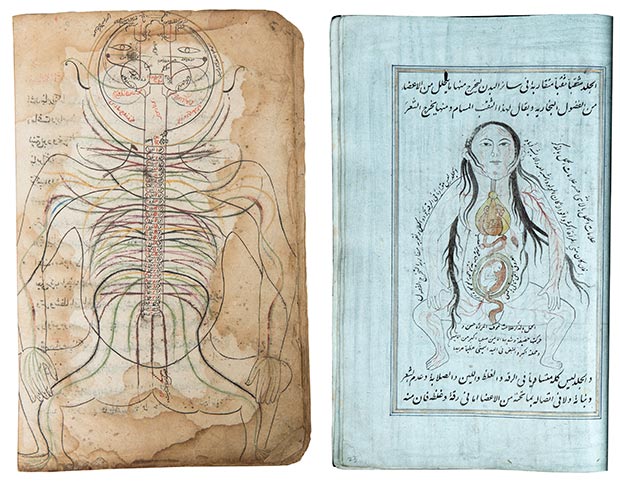 L_Al-Tashrih bi al-Taswir, (The Illustrated Anatomy), Safavid Iran or Moghul India, circa 16th century AD / 10th century AH, IAMM 2016.11.12, Attributed to Mansur ibn Muhammad ibn Ahmad ibn Yusuf ibn Faqir Ilyas (fl. 15th century AD / 9th century AH). The most influential anatomical treatise in the Islamic world featuring six-full figure of human anatomy, namely skeleton, nervous system, veins, arteries, muscular system, and female with fetus in breech position. The image shows the nervous system / R_Al-Bayan fi Tashrih al-Abdan, (Explanation of Human Anatomy), Iraq, 19th century AD / 13th century AH, IAMM 2012.2.29. The most influential anatomical treatise in the Islamic world featuring six-full figure of human anatomy, namely skeleton, nervous system, veins, arteries, muscular system, and female with foetus in breech position, as can be seen on this page / Courtesy of IAMM
L_Al-Tashrih bi al-Taswir, (The Illustrated Anatomy), Safavid Iran or Moghul India, circa 16th century AD / 10th century AH, IAMM 2016.11.12, Attributed to Mansur ibn Muhammad ibn Ahmad ibn Yusuf ibn Faqir Ilyas (fl. 15th century AD / 9th century AH). The most influential anatomical treatise in the Islamic world featuring six-full figure of human anatomy, namely skeleton, nervous system, veins, arteries, muscular system, and female with fetus in breech position. The image shows the nervous system / R_Al-Bayan fi Tashrih al-Abdan, (Explanation of Human Anatomy), Iraq, 19th century AD / 13th century AH, IAMM 2012.2.29. The most influential anatomical treatise in the Islamic world featuring six-full figure of human anatomy, namely skeleton, nervous system, veins, arteries, muscular system, and female with foetus in breech position, as can be seen on this page / Courtesy of IAMM
The IAMM also presents a compact selection of works from the Malay Archipelago that acts as a window to see how illnesses affected the Malays of the 19th century such as yaws, malaria and typhoid. With this exhibition, IAMM hopes to introduce and share with the visitors a vibrant picture of the passion, curiosity and intellectual impulse that drove the development of medicine in the Islamic world. Above all, to project a glimpse of the medical evolution from the practice of humoral theory to the innovations in chemical medicine to the arrival of modern medicine — a story of one of mankind’s greatest intellectual pursuits.
IAMM is also pleased to announce its latest publication with the same title, “Al-Tibb: Healing Traditions in Islamic Medical Manuscriptsâ€, to accompany this exhibition. The catalogue provides analyses of 42 manuscripts of various medical subjects, divided within its nine chapters, namely: The Spread of Medical Knowledge in the Islamic World, Prophetic Medicine, Anatomy and Physiology in Medieval Islam, Concepts of Pathology in Muslim Culture, Pharmacy and its Offshoots, Eating and Good Health in Medieval Islam, Malay Traditional Healing, Divination and ‘Magic’ in Islamic Medicine, and Equine Veterinary Knowledge in the Islamic World. The catalogue aims to introduce the cornucopia of medicinal manuscripts within the IAMM collection, and to contribute to the growing interest in medical manuscripts among scientists and academicians. Readers will benefit from the writings of notable scholars from local and abroad including those who are from Universiti Putra Malaysia, Dewan Bahasa dan Pustaka, International Islamic University Malaysia, Ashmolean Museum, University of Paris III: Sorbonne Nouvelle and Exeter University. The catalogue has 20% discount throughout the exhibition.
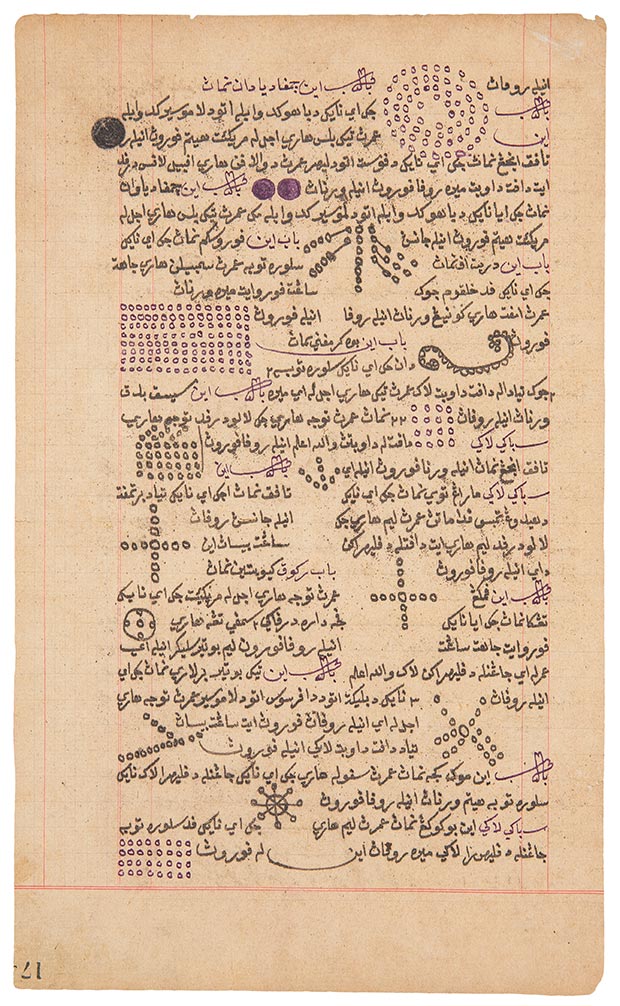 Malay Kitab Tibb, Malay Peninsula, 19th century AD / 13th century AH, IAMM 1998.1.3115. A page showing various shapes of puru pustules with each are given specific name, age, growth area, and either the puru can be heal or otherwise / Courtesy of IAMM
Malay Kitab Tibb, Malay Peninsula, 19th century AD / 13th century AH, IAMM 1998.1.3115. A page showing various shapes of puru pustules with each are given specific name, age, growth area, and either the puru can be heal or otherwise / Courtesy of IAMM
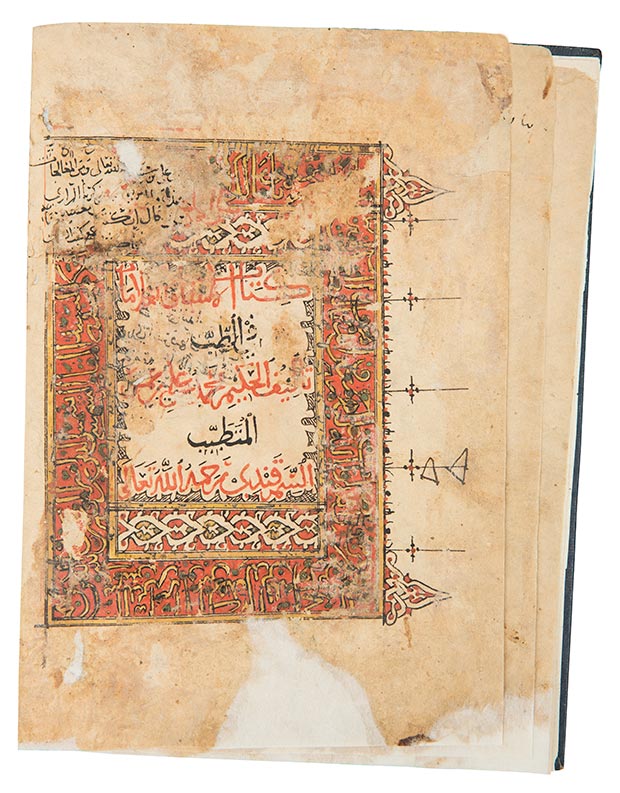 Kitab Al-Asbab wa al-Alamat fi al-Tibb (The Book of Causes and Symptoms), Yemen, 16th century AD / 10th century AH. Attributed to Najib al-Din al-Samarqandi (d. 1222 AD / 619 AH). IAMM 2011.7.48. The treatise is a therapeutic encyclopaedia which discusses the causes (asbab), symptoms (‘alamah) and treatment (‘ilaj) for every disease then known. It is arranged in order from head to toe / Courtesy of IAMM
Kitab Al-Asbab wa al-Alamat fi al-Tibb (The Book of Causes and Symptoms), Yemen, 16th century AD / 10th century AH. Attributed to Najib al-Din al-Samarqandi (d. 1222 AD / 619 AH). IAMM 2011.7.48. The treatise is a therapeutic encyclopaedia which discusses the causes (asbab), symptoms (‘alamah) and treatment (‘ilaj) for every disease then known. It is arranged in order from head to toe / Courtesy of IAMM
So far, the exhibition has attracted many visitors from various backgrounds including art historians, medical professions, and history of medicine expertise, among them the Sultan of Kedah, Tunku Sallehuddin Ibni Almarhum Sultan Badlishah and his wife. The IAMM Education Department has a variety of programmes for the public such as lectures and hands-on workshops throughout the eight-month period of the exhibition. The speakers for the public lectures include prominent scholars in their respected fields and accomplished authors. Prof. Dr. Hajah Faridah Abdul Rashid has authored a book entitled 'Biography of The Early Malay Doctors 1900-1957 Malaya and Singapore' in which her findings will be discussed in the upcoming lecture. In addition to the list of respected scholars who will be joining us at IAMM is Dr. Farouk Yahya, the author of 'Magic and Divination in Malay Illustrated Manuscripts', and Dr Fabrizio Speziale, the author of 'Hospitals in Iran and India, 1500-1950s'.
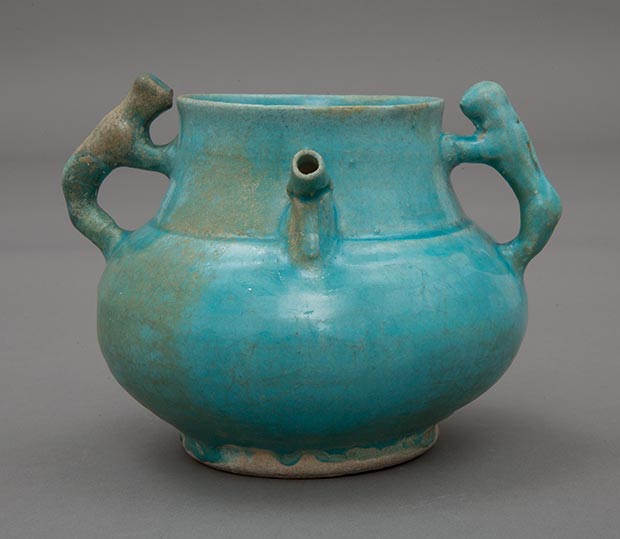 Posset Pot, Iran, c. 13th century AD / 7th century AH. IAMM 1998.2.271. This turquoise alkaline glazed posset pot with feline-shaped handles and a spout was possibly used to ease patients to consume medical concoction through the spout by filtering any floating pieces in the pot / Courtesy of IAMM
Posset Pot, Iran, c. 13th century AD / 7th century AH. IAMM 1998.2.271. This turquoise alkaline glazed posset pot with feline-shaped handles and a spout was possibly used to ease patients to consume medical concoction through the spout by filtering any floating pieces in the pot / Courtesy of IAMM
_Timurid_Iran_1434.jpg) Zakhira Khwarazmshahi (Thesaurus of the Shah of Khwarazm), Timurid Iran, 1434 AD / 838 AH. IAMM 2016.10.8. Attributed to Zayn al-Din Isma’il ibn Hasan al-Jurjani (d. (died 1136 AD /531 AH). The most important treatise in Persian written as a tribute to Qutb al-Din Khwarazm Shah Abu al- Fath Muhammad ibn Yamin al-Din (d.1127 AD / 521 AH) / Courtesy of IAMM
Zakhira Khwarazmshahi (Thesaurus of the Shah of Khwarazm), Timurid Iran, 1434 AD / 838 AH. IAMM 2016.10.8. Attributed to Zayn al-Din Isma’il ibn Hasan al-Jurjani (d. (died 1136 AD /531 AH). The most important treatise in Persian written as a tribute to Qutb al-Din Khwarazm Shah Abu al- Fath Muhammad ibn Yamin al-Din (d.1127 AD / 521 AH) / Courtesy of IAMM
As part of IAMM’s effort to highlight the importance of the Malay medical manuscripts, a collaboration has been formed between the IAMM and the International Islamic University Malaysia (IIUM) to host the 2nd International Conference on Malay Medical Manuscripts (8-9 September 2018). For further information, please visit iamm.org.my/education.
Comments
Add a comment